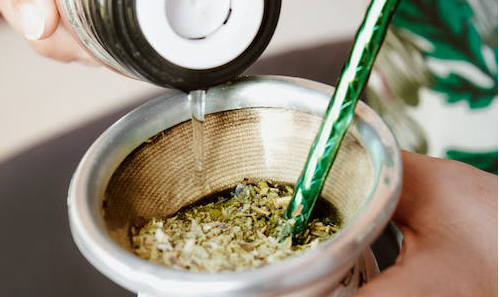Introduction
Yerba mate, a beverage cherished by many across South America, has a rich history, deep cultural significance, and an array of health benefits. This herbal infusion, prepared by steeping the leaves of the Ilex paraguariensis plant, has transcended time and borders, becoming a symbol of tradition and unity. In this article, we’ll delve into the world of yerba mate, exploring its history, cultural importance, preparation methods, and the myriad advantages that accompany sipping this invigorating elixir.
Yerba Mate: A Historical Journey
Yerba mate’s history is as captivating as its flavor. The story begins in the lush rainforests of South America, where indigenous peoples discovered the magic of the Ilex paraguariensis plant. The Guaraní people, in particular, are credited with its discovery and the development of mate into a cultural tradition.
For centuries, yerba mate was known as a gift from the gods and was integral to the daily lives of these indigenous communities. It was used for its stimulating properties, medicinal qualities, and even played a central role in tribal ceremonies. The Spanish colonizers, upon their arrival in the region, quickly recognized the value of mate, leading to its spread across the continent.
Cultural Significance and Traditions
Yerba mate is more than just a beverage; it’s a symbol of hospitality, friendship, and unity. The sharing of mate is a common social practice, bringing people together to connect, share stories, and strengthen bonds.
Participating in a traditional mate ceremony is a profound experience. The ritual typically involves a “cebador,” the person responsible for preparing and serving the mate. The mate is sipped from a hollowed-out gourd through a metal or wooden straw called a “bombilla.” The act of sharing mate goes beyond quenching thirst; it signifies respect and inclusion in the culture.
What is Yerba Mate, and How is it Prepared?
Yerba mate is derived from the leaves and stems of the Ilex paraguariensis plant. It is processed by drying, aging, and finely milling the leaves. The result is a product that is perfect for steeping in hot (but not boiling) water.
To prepare yerba mate, one fills a mate gourd or cup with the dry leaves, often called “yerba.” The yerba is then shaken to create an incline within the gourd. A bombilla is inserted, acting as both a straw and a sieve to prevent the leaves from entering the mouth. Hot water, usually around 160-180°F (71-82°C), is poured into the gourd, and the mate is ready to be enjoyed. The infusion can be refilled multiple times before the flavor diminishes.
The Benefits of Drinking Yerba Mate
-
Beyond its cultural and social significance, yerba mate offers a range of health benefits. Its unique chemical composition includes caffeine, theobromine, and a wealth of antioxidants.
-
Energy and Alertness: Yerba mate provides a gentle and sustained energy boost, often without the jitters associated with coffee. The caffeine content, combined with theobromine, promotes alertness and mental focus.
-
Nutrient-Rich: Yerba mate is a treasure trove of vitamins and minerals, including vitamins A, B, C, and E, as well as calcium, iron, magnesium, and potassium.
-
Antioxidant Power: Rich in antioxidants, yerba mate helps combat oxidative stress and reduce the risk of chronic diseases.
-
Digestive Aid: It is known for its digestive properties, aiding in digestion and soothing stomach discomfort.
-
Weight Management: Some studies suggest that yerba mate can boost metabolism and assist in weight management.
Conclusion
Yerba mate is more than just a beverage; it is a cultural emblem, a symbol of friendship, and a source of vitality. Its history, cultural significance, and numerous health benefits make it a fascinating subject of study and a delightful companion for those who choose to embrace its magic. In the following articles, we’ll delve deeper into the intricacies of yerba mate, from its diverse varieties to its preparation methods and its role in modern society.
